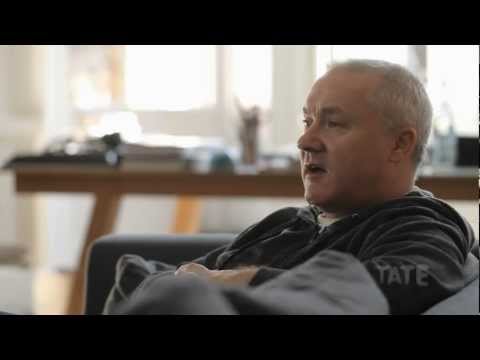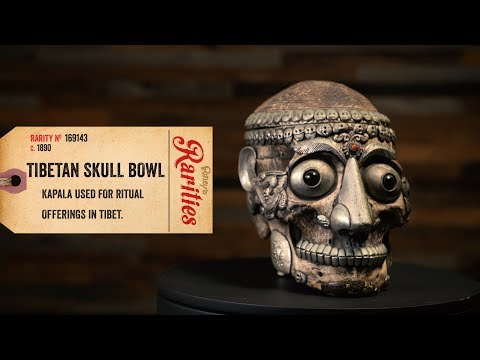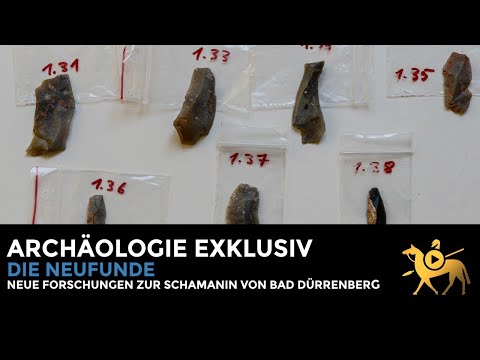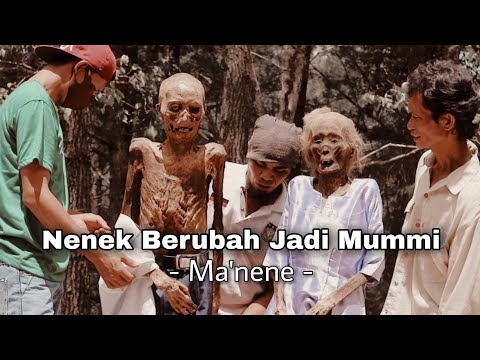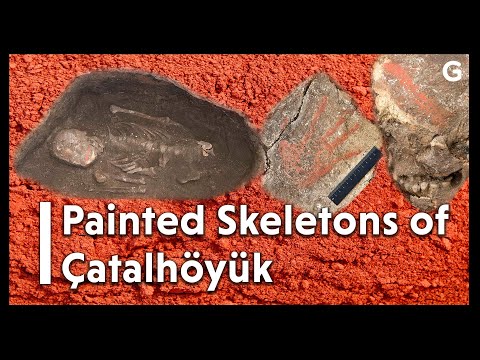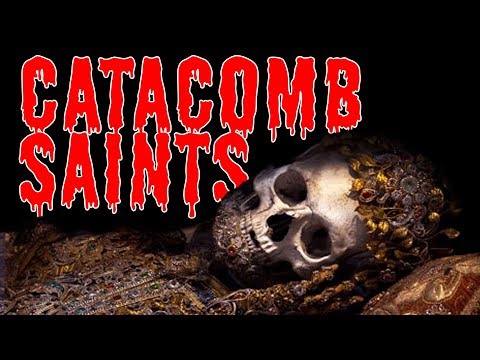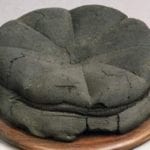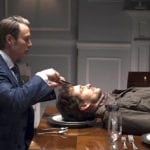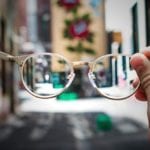Here are ten ways that human remains have been embellished.
10 For the Love of God
There is a common motif in European art that some have found a bit macabre. Memento Mori are artworks designed to remind viewers that death is coming for us all. Painters have long included skulls in their works to underline the transience of human life. Damien Hirst decided to go a little further in his piece For the Love of God. After buying an 18th-century skull, he had the teeth removed from the jaw and cleaned by a dentist. A perfect cast of the skull was then made, and platinum was used to replace the bones. Into the platinum skull were placed 8,601 flawless diamonds, including a large pink stone on the forehead. The original teeth were then inserted back into the jaws. The grinning skull was put up for sale for £50 million.[1]
9 Tezcatlipoca Turquoise Skull
One of Hirst’s inspirations for his decorated skull was the Tezcatlipoca Turquoise Skull held in the British Museum. This Aztec skull dates from the 15th century and is covered with small tiles made from turquoise, lignite, and seashells. The staring eyes are made from polished lumps of pyrite. The skull has been cut away at the back, and the inside is lined with deer skin. The jaw is loosely attached to allow it to move up and down. It is thought that the skull is a representation of the god Tezcatlipoca. He was a god associated with divination, obsidian, the night sky, and conflict. The skull has straps attached that were originally painted red, so it is thought that it was designed to be worn—possibly by a priest for use during a ritual. Other decorated Aztec skulls have been discovered. Researchers who studied them concluded that only the most high-ranking human sacrifices had their skulls converted into these decorated masks.[2]
8 Gobekli Skulls
Gobekli Tepe in Turkey is one of the most intriguing ancient sites ever discovered. Dating to around 8000 to 9000 BC, it contains some of the earliest large carved stones in the world. These are decorated with images of lions, bulls, foxes, and other animals, as well as abstract patterns. The largest stones at the site would have taken tens of people a year to carve and even more people to move into its location. As well as the remains of animals, which may have been sacrificed, a number of human bodies have been found at Gobekli Tepe. They have led some researchers to describe a “skull cult” that once existed there. This is because some of the skulls have deliberately carved marks on them. Once the skin and flesh had been flayed from the skulls, it appears that deep gouges and holes were made into the bones for some purpose. That the marks may have been part of a ritual is suggested by their deliberate nature and that the pigment ochre had been dabbed onto the bones too. These may be the earliest examples of decorated human remains ever found.[3]
7 Monk in a Statue
A statue of a Buddhist monk from China made its way to a market in the Netherlands. There it was snapped up by someone who appreciated its aesthetic qualities. When the purchaser took it to be restored, he and the restorer were undoubtedly startled to discover a human skeleton inside. In 2014, the statue was taken to a hospital to undergo a CT scan to reveal more about the person who had been turned into their own sculpture. The scans revealed that the 1,000-year-old body was in a sitting position that exactly mirrored the shape of the statue. The body is assumed to be that of the Buddhist Liuquan, who died around the year 1100 AD. Probes were inserted into the gold-painted statue, and samples were taken from the body. The researchers found scraps of paper that had Chinese writing on them. The internal organs of the body had been removed and replaced with these papers before the body was turned into a statue.[4]
6 Kapala Skulls
Kapala is a term in Sanskrit which can refer to a bowl—or a skull that has been turned into a vessel. Following Tibetan ritual, bodies were given “sky burials,” which involved leaving the dead open to nature and allowing birds and animals to consume the flesh. Once all that was left were bones, then the skull could be retrieved and turned into something beautiful. Watch this video on YouTube These Kapala skulls were then ritually anointed with oils and prepared for use in other rituals. Sometimes this involved carving images and patterns into the skull itself or decorating the skull with silver and stones. The Kapala could be placed on altars or used as drinking and eating bowls. It was thought that the wisdom and knowledge of the dead could be taken in by the one who consumed from the skull. To ward off the anger of destructive deities, cakes shaped like human body parts would be placed in the Kapala and offered up to the vengeful spirits.[5]
5 Bad Durrenberg Shaman
When people die today, they are often dressed in their best suit or favorite dress. In the past, however, the dead might be buried with the tools of their profession, like ancient archers interred with flint arrowheads. In Bad Durrenberg in Germany around 9000 years ago, a woman was dressed for burial in an outfit that suggests she was a shaman. Watch this video on YouTube The Bad Durrenberg Shaman was a woman aged around 25 or 30, found buried sitting upright and packed in thick red clay. Nearby was the body of a young baby. What marks her as special are the objects she had been dressed in—the regalia. These included an extraordinary headdress made from animal bones, teeth, and two horns from a roebuck deer. Studies of the body suggest that the woman suffered from a malformation of her neck that would have restricted blood flow. By holding her head in certain positions, she would have fainted. This might have made her an effective go-between for her people and the world of the spirits.[6]
4 Dressing the Dead
On Sulawesi Island in Indonesia, a festival takes place called the Manene. Everyone is expected to attend: young, old, and even the dead. At the Manene, families gather to clean the tombs of their ancestors and take their bodies out into the sun. Once they have been removed, the corpses are dressed in fresh clothes. This allows the living to show the departed that they are still respected and treasured. Some are given their favorite things to underline the reverence they are held in. Some bodies might get a pair of sunglasses to shield them from the glare. Others might be given a cigarette. It is thought that by treating the dead with respect, the dead will help to bless the community. The Manene is only performed every few years. Many of the bodies are in a remarkable state of preservation. They must enjoy the good afterlife.[7]
3 The Oldest City
Çatalhöyük has been described as a proto-city and may be among the earliest-built human communities. The ruins were found in Turkey and are markedly different from what you might expect a city to look like. The mud-brick buildings were all built one against another—there were no roads or walkways between homes. To enter your house, you walked along the roof and descended a ladder. Çatalhöyük was inhabited from around 7100 to 5600 BC. While most attention has been drawn to how people lived in this early city, other researchers have found the dead of Çatalhöyük to be equally interesting. Many of the homes had dead bodies buried under their floors. The purpose of burying people inside houses is unknown, but it is found in several cultures. What marks the bodies of Çatalhöyük as different, quite literally, is that they were ritually painted after their deaths. Some of the bodies have striking marks of red cinnabar painted on them. One body shows a stripe of pigment applied to the skull. Only a minority of bodies found in the city were painted in this way, which opens questions as to what purpose the decoration served.[8]
2 Saints
In Catholicism, there has long been a tradition of treating the body parts of saints as holy. These relics were often thought to grant miracles to worshippers. Less known is that even to this day, all Catholic altars used for mass celebrations have small relics in them. Not all relics are hidden; some are ostentatiously put on display. When most people think of reliquaries holding the mortal remains of saints, they think of a little golden object—maybe with a saint’s finger or a bit of bone inside. Sometimes the whole body is turned into a sparkling relic, however. Some, like Saint Deodatus in Rheinau, Switzerland, are shown sitting upright and clothed in shining armor. His skull is covered in a wax mask. Others prefer to only show the skull of the saint. Known as catacomb saints, these bodies were mostly shipped out from Rome for churches elsewhere in Europe. The churches who took the bodies often spent lavish sums to coat the bones in layers of gold or silver and stud them with precious gems.[9]
1 The Jericho Skull
About 9,500 years ago in Jericho, modern Palestine, a man died. We know this because his skull was discovered by excavators in 1953. Unlike most nameless skulls from the past, however, we know what this man looked like. After he died, his head was removed from his body, and a hole was cut into the back of the skull, into which soil was stuffed before plugging it with clay. Then the skull was coated in plaster and modeled to resemble the man’s face in life. Shells were then inserted to resemble eyes. It is probably the oldest portrait held in the British Museum. Watch this video on YouTube The skull was scanned to ascertain whether the face that was put on the skull was supposed to be a portrait or just a symbolic representation. From these scans, a scientific reconstruction of the face was possible. They also revealed that the man’s head had been bound as an infant to permanently change the shape of the head. Other plastered skulls like the Jericho Skull have been discovered. One in the Ashmolean Museum uses the ridged sections of cowrie shells to mimic eyes. If you don’t want to see a skull squinting at you, it is probably best to avoid searching this one out. [10]
